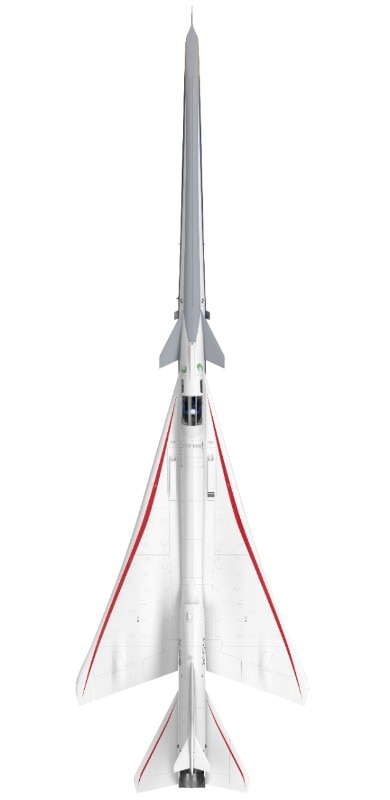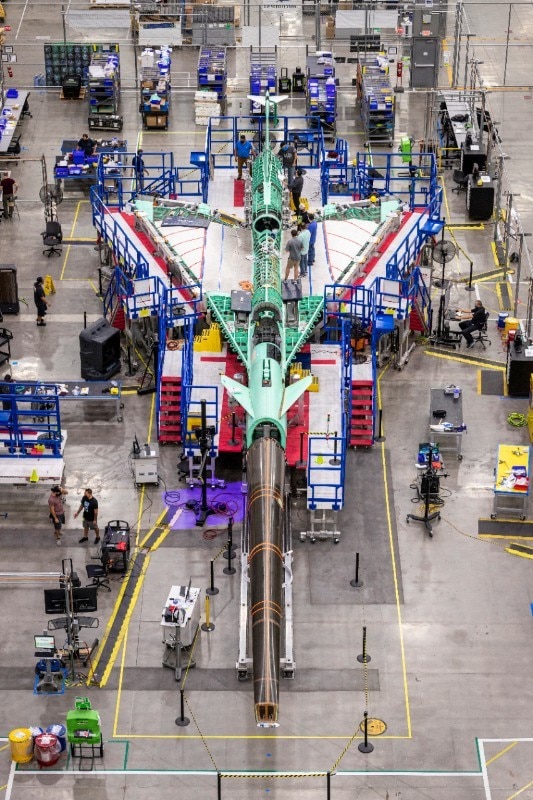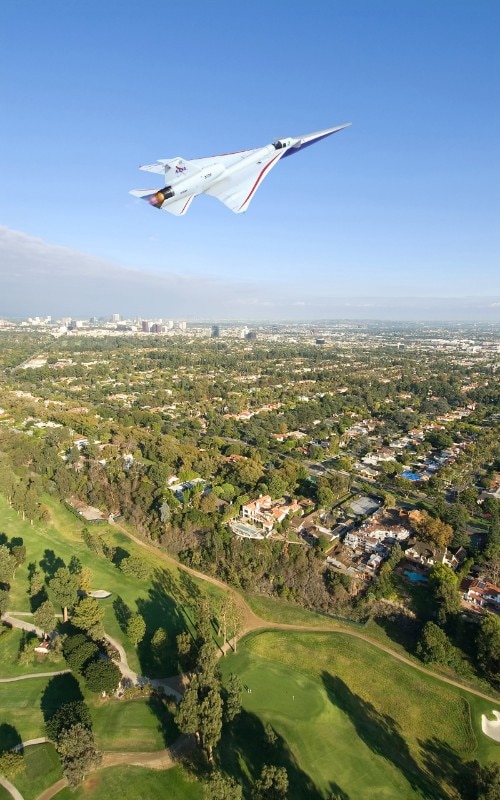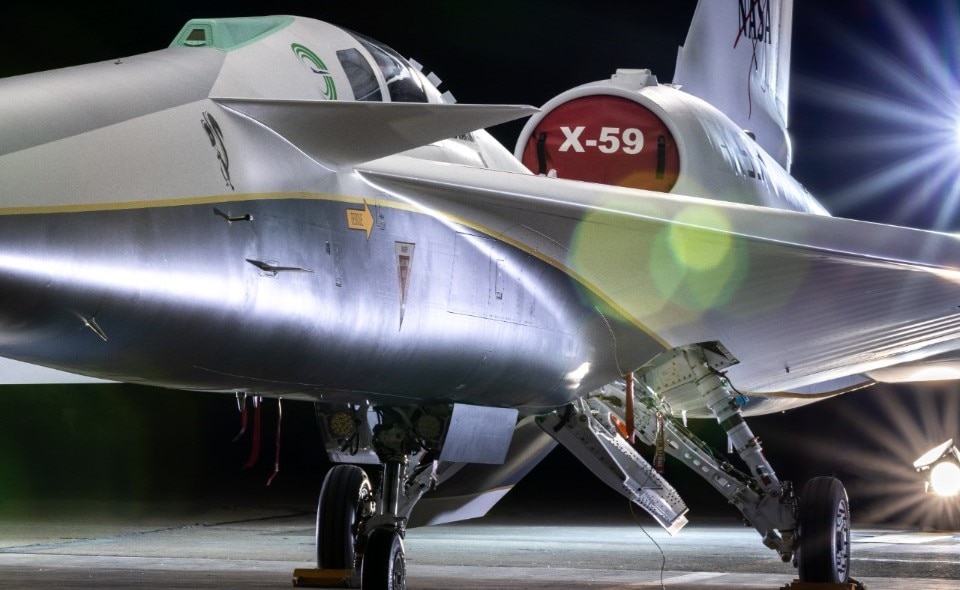This article was originally published on Domus 1092.
For the scientists and engineers at Skunk Works, the pseudonym of Lockheed Martin’s advanced development programmes and experimental aircraft division, nothing is impossible. This was the case back in June 1943, when the US Army’s Air Tactical Service Command (Atcs) met with the top management of the then Lockheed Aircraft Co., and expressed the need for a jet fighter to counter the growing threat of a German jet.

Within a month, a young engineer named Clarence “Kelly” L. Johnson, working with a small team of mechanics and engineers, presented plans for the XP-80 Shooting Star. The first American jet fighter was designed and built in total secrecy in just 143 days, 7 less than required. But a decade has been nowhere near enough to successfully overcome one of the most demanding technological challenges ever undertaken by both the company based in Bethesda, Maryland, and Nasa. In other words, to eliminate, or rather reduce, the boom produced by supersonic flight, which has been banned over US land since 1973.
This elusive goal was first investigated with inadequate technologies in the 1950s, a few years after Chuck Yeager’s Bell Xs-1 broke the sound barrier for the first time on 14 October 1947. (It reached Mach 1.06, about 1,299 kilometres per hour, but it is unclear if the shock wave was perceived on the ground.) Nasa and Lockheed Martin’s X-59, unveiled on 12 January 2024 in Palmdale, California, opened a new chapter in this long history. Lawrence R. Benson, the former head of the Air Force History Office at the Pentagon, reconstructed it in meticulous detail in his book Quieting the Boom (2013). He recounted the story up to the advent of the first true flying test-bed specially modified in the early 2000s, to compare the aircraft’s real sound footprint generated at altitude with data obtained in the wind tunnel.

The true ancestor of the X-59 was a long-lived and agile Northrop Grumman fighter, the F-5. Renamed the F-5 ssbd (Shaped Sonic Boom Demonstrator), because of its flattened composite nose that made it look like a pelican, the F-5 has been in a museum in Florida since 2006. Running along the fuselage are two N-shaped lines, the “N-wave”, the signature of the sonic boom, with the flattened one at the apex representing the noise attenuation achieved by the new nose.
The rollout revealed the definitive architecture of the X-59, the cornerstone of Nasa’s Quesst (Quiet SuperSonic Technology). With its sophisticated aerodynamics, it seeks to keep the shock waves that cause the sonic boom from coalescing by reducing the impact of the N-waves. The ambitious target is to achieve 75 effectively perceived decibels (Concorde exceeded 100 decibels). Lockheed Martin describes this noise level as comparable to a car door slamming.

The investments and expectations are huge. Awaiting the first take-off by the end of the year, after ground and taxiing tests, Nasa will conduct a series of trials with its F-15 and F-18 over a stretch of desert about 48 kilometres wide near the town of Edwards, California. It will also validate a network of ground stations capable of accurately recording shock wave intensity. This will be followed by flights over urban areas and various cities. Historical precedents are not encouraging. Between 1956 and 1963, as a result of thousands of supersonic flights conducted throughout the country, including metropolises, the Air Force received 38,831 claims (14,006 were accepted) for broken glass, cracked trim and plaster, and falling objects. Some were bizarre, such as the death of pets and crazed livestock.
Opening image: Detail of the aircraft taken during the launch ceremony in Palmdale on 12 January 2024. Photo Lockheed Martin / Garry Tice



